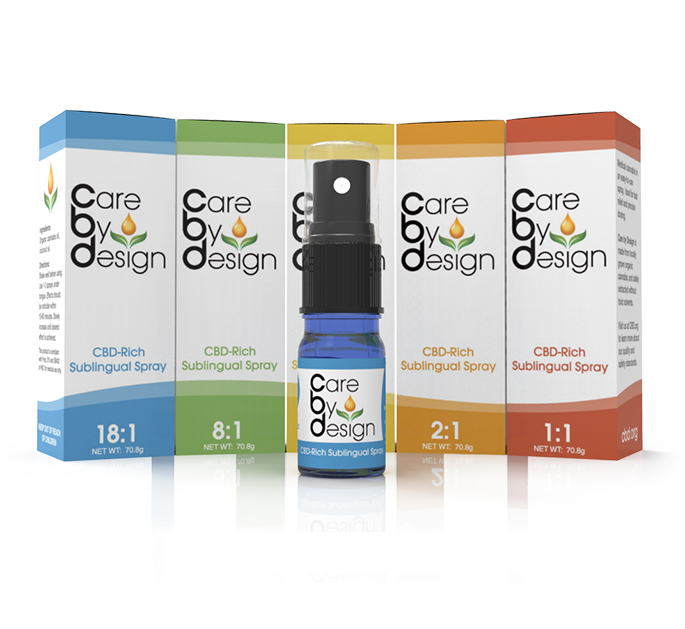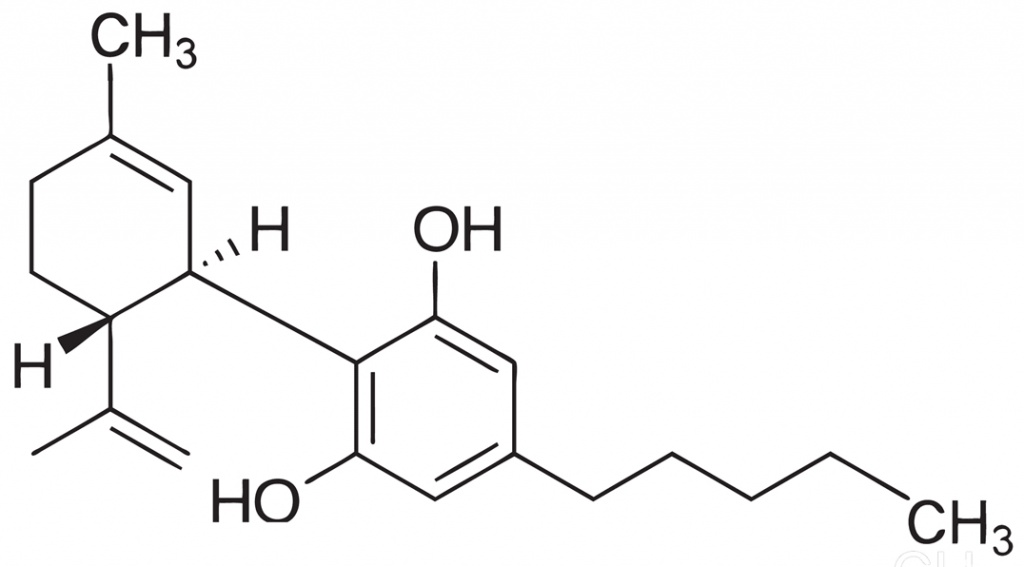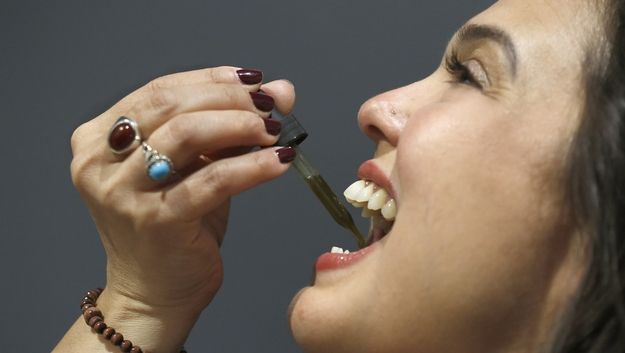What is cannabidiol, or CBD, and is it right for me?

Very few aspects of medical cannabis are as high-profile or misunderstood as that of “cannabidiol” or CBD, the second most common active ingredient in marijuana.
For some patients, cannabidiol has been a wonder drug that has eased chronic lower back pain or neuropathy like no other prescribed medication. It’s precisely because of its clear medical uses — combined with its status as a federally illegal schedule 1 drug that few in the U.S. can study — that’s allowed a largely unregulated international market for the chemical to flourish.
On one hand, the mainstream medical establishment in the U.S. has clearly failed to pursue a promising drug known throughout history to have the potential to help ease pain and save lives. On the other hand, opportunistic hucksters have seized on cannabidiol research to peddle the modern equivalent of snake oil.
This non-addictive molecule offers patients many of cannabis’ medicinal benefits, without the negative side effects associated with psychoactive THC. Could CBD be right for you? Read on to learn more.
What is cannabidiol, or CBD, and is it right for me?
Are you looking to experience the benefits of cannabis, without getting high? Are you sensitive to the negative effects of THC? Do you have a seizure condition? If you answered yes to any of these questions, you may want to look into cannabidiol.
Cannabidiol is the second most common active ingredient in marijuana. It’s a “cannabinoid”. Cannabinoids interact with an important electro-chemical signaling system in your nerves called “the endocannabinoid system”. While your body produces natural cannabinoids (called “endocannabinoids”) which activate this system, the system of nerve cell receptors and chemicals can also be triggered by the “phyto-cannabinoids” in marijuana, such as CBD.
Cannabidiol is well-studied, and a search of the medical article database PudMed.com for “cannabidiol” returned 2,688 results. According to a 2017 National Academy of Sciences review, “Cannabidiol was first isolated from hemp oil in 1940.”

Will cannabidiol make me feel “high”?
No. Cannabidiol does not cause mood elevation or “euphoria”, also known as a high. By itself, CBD will not cause you to feel high. However, many cannabidiol products also include THC, which may cause a mood lift.
According to the World Health Organization, “In general, clinical studies have reported that even high doses of oral CBD do not cause the those effects that are characteristic for THC and for cannabis rich in THC. For example, in a study of healthy volunteers administered 200mg oral CBD,cannabidiol did not produce any impairments of motor or psychomotor performance.”
Patients report that CBD has a calming effect on mood, lessening anxiety and promoting a non-euphoric sense of calm and well-being.
Is cannabidiol addictive?
No. According to a 2017 WHO review the medical literature: “In humans, CBD exhibits no effects indicative of any abuse or dependence potential.”
What is cannabidiol being used for?
CBD is used for many conditions. Patients report using CBD to relieve pain, reduce inflammation, manage anxiety, and reduce seizures and muscle spasms. A number of pre-clinical and clinical studies support patient self-report data. The World Health Organization reported in 2017 that CBD may play a role in treating epilepsy, Alzheimer’s disease, cell damage due to low oxygen (hypoxia) as in during stroke, cancer, psychosis, Parkinson’s disease, multiple sclerosis, huntington’s disease, depression, nausea, rheumatoid arthritis, infection, inflammatory bowel and Crohn’s Disease, cardiovascular disease and diabetic complications.
The vast range of CBD’s potential applications is thought to stem from its action on both the endocannabinoid signalling system and non-endocannabinoid signalling systems — all of which play a role in most human bodily functions.
The WHO reported, “the range of conditions for which CBD has been assessed is diverse, consistent with its neuroprotective, antiepileptic, hypoxia-ischemia, anxiolytic, antipsychotic, analgesic, anti-inflammatory, anti-asthmatic, and antitumor properties.”
CBD might also be able to help treat addictions to cocaine, opioids, and methamphetamine, according to “a limited number of preclinical studies”, the WHO reports.
Where does cannabidiol come from?
CBD can come from the high-CBD cannabis plants, as well as from hemp, which is a cousin to cannabis grown for food, fuel and fiber.
It’s important to know the source of your CBD, because generally no regulatory body assures the purity or potency of most cannabidiol products — especially those bought online. States with legal medical cannabis and recreational cannabis often do regulate CBD purity and potency by requiring all products be tested by an accredited lab and then labelled. Sourcing CBD from a licensed medical cannabis dispensary is your best bet. This insures you are using CBD from a cannabis plant, grown with medicine in mind. With hemp-derived CBD products found online, there isn’t much quality control. So, they may not contain the amount of CBD they claim, or might be made with hemp that was grown overseas for industrial use. Hemp is a “bioaccumulator” crop — meaning it sucks up whatever toxins are in the soil. Those toxins could taint any extracts of CBD from hemp.
How do I find cannabidiol?
You can find CBD in most states with recreational or medical cannabis laws. In America, nine states have legalized cannabis for adults, and 29 states have medical marijuana laws. We do not recommend purchasing CBD online. Contrary to manufacturer claims, CBD remains a federally illegal, schedule 1 drug the U.S. government deems as dangerous and medically useless and heroin or PCP.
How do I take cannabidiol?
CBD can be taken in all the same ways as other types of cannabis. It can be smoked, vaporized, taken sublingually, eaten or used as a topical. Most clinical applications involve taking the drug orally in a solution, called a “tincture”.

What is one dose of cannabidiol? Can I overdose on CBD?
The WHO reported: “A wide range of oral doses have been reported in the literature, with most from 100- 800mg/day.”
The right dosing for CBD depends greatly on the person taking it and the condition it is being taken for. Some may only need a small amount (say five milligrams), while others may need very large doses (200 mg+). Still, the World Health Organization reviewed the safety of CBD in it’s report and found that “there is no evidence of recreational use of CBD or any public health related problems associated with the use of pure CBD.” So far, no CBD overdoses have been reported.
Who should not use cannabidiol?
CBD is considered very safe, but might not be right for everyone.
Those using THC medicinally may find that CBD reduces its effects. If for example, you use THC to treat depression, CBD may interfere with this benefit. Some patients have also experienced mild negative side effects like hypotension, dry mouth, psychomotor slowing, lightheadedness, and sedation when using CBD. These could be reasons to avoid it.
A 2017 review in the journal Cannabis and Cannabinoid Research concluded: “the most commonly reported side effects were tiredness, diarrhea, and changes of appetite/weight.”
CBD can also cause negative drug interactions with other drugs a patient might be taking. According to the WHO review, “CBD is generally well tolerated with a good safety profile. Reported adverse effects may be as a result of drug-drug interactions between CBD and patients’ existing medications.”
For example, epilepsy patients who were taking the epilepsy drug clobazam and CBD reported side effects which ended when they discontinued clobazam but kept taking CBD.
What is the law around cannabidiol?
Cannabis-derived CBD is still schedule 1, and is only legal in states that have legalized marijuana for medical or recreational purposes. Because of CBD’s safety profile, the U.S. Drug Enforcement Administration has generally not made violations of the Controlled Substances Act with regard to CBD a priority for enforcement, as compared to opioids and other drugs. Local police as well as the Food and Drug Administration have taken action however, sometimes closing stores or threatening CBD sellers with product seizures and fines, according to the research group Project CBD.
Got more questions about CBD or other cannabinoids? Email GreenState editor ddowns@sfchronicle.com or message us via Instagram, Facebook, or Twitter.
Emily Earlenbaugh, PhD is a cannabis writer and educator. She holds a doctorate in the philosophy of science from UC Davis.